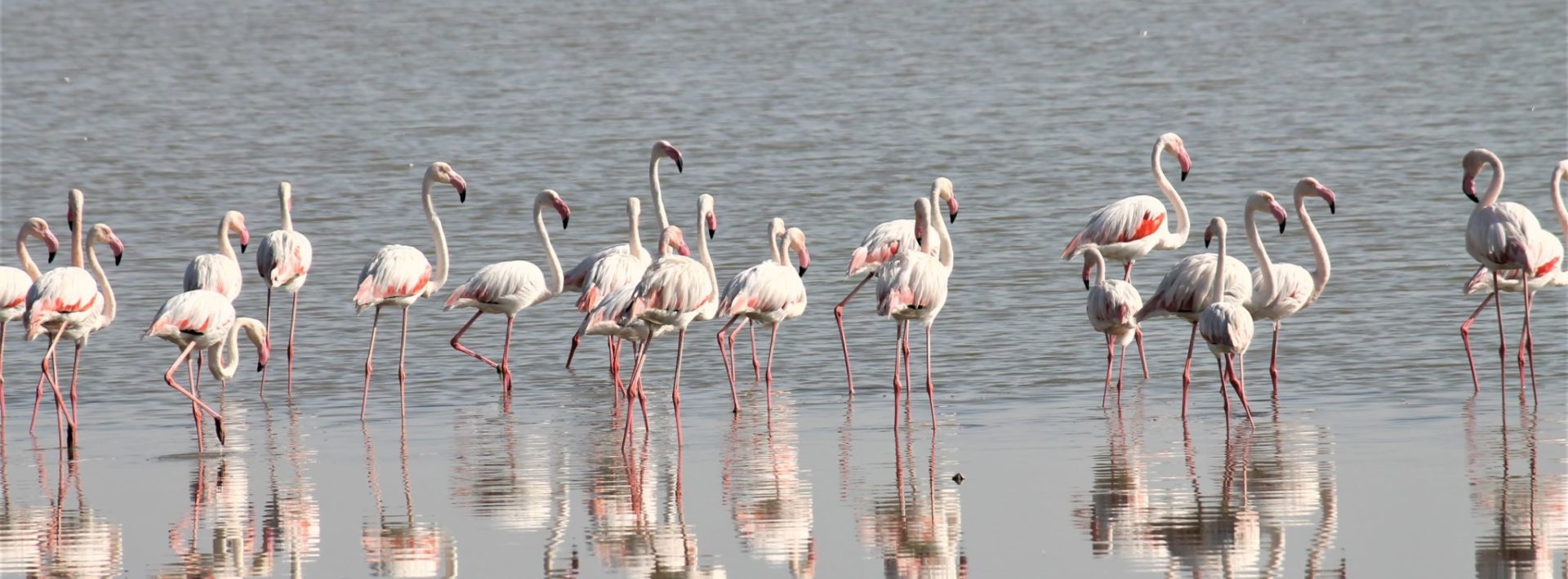
Healthy Wetland Nature
-
Healthy Wetland Nature
Wetlands teem with life, supporting a diverse range of plant and animal species. For several rare and endangered ones, these are indeed the last refuge.
We aim at halting and reversing loss of wetlands habitats, sites and species.We work for securing healthy wetland nature through three strategies:
- developing integrated management plans to conserve the full range of biodiversity and ecosystem service values
- developing capacity of wetland managers to apply integrated management approaches; and,
- building database of wetland status and trends.
Integrated management planning for wetlands
We work for wetland conservation in ways which relate to the nature of wetlands as ecosystems, and the wider biophysical and social contexts in which they are placed and function. We promote conservation and wise use of wetlands based on diagnostic assessment of wetland features and their influencing factors. A mix of approaches including technical knowledge, policy dialogue and field demonstrations for addressing various issues related to wetland management helps us deliver our objectives.
To leverage change, the organization works with national and state governments, knowledge centers, civil society as well as private sector, often acting as catalysts to enable joined up actions. Given that securing positive change in status of wetlands and linked livelihoods takes considerable time, we work for long term engagement, forging strategic and innovative partnerships.
The ‘wise use’ approach of Ramsar Convention is globally recognized as the central tenet of wetland management. The approach recognizes that restricting wetland loss and degradation requires incorporation of linkages between people and wetlands, and thereby emphasizes that human use of these ecosystems on sustainable basis is compatible with conservation. Wise use of wetlands entails “the maintenance of their ecological character, achieved through the implementation of ecosystem approaches, within the context of sustainable development”. Wise use, through emphasis on sustainable development, calls for resource use patterns which can ensure that human dependence on wetlands can be maintained not only in the present, but also in the future.
We have formulated integrated management plans for eight Indian Ramsar Sites, thus assisting the site managers in meeting wise use commitments.
Capacity development
Being located at the interface of land and water, wetlands are influenced by a range of developmental activities which take place within their direct and indirect basins and coastal zones. Integrated management of wetlands capacities for communication and coordination across multiple sectors, and balancing the needs of a diverse stakeholder group while ensuring that ecological integrity of these fragile ecosystems is not adversely affected.
Capacity development of wetlands managers to deliver integrated management of wetlands is a priority area of work for us. We deliver tailor made courses for different stakeholder groups. We also assist national and state governments, civil society and private sector in mobilizing the required knowledge and skills to implement wetland management.
Management effectiveness assessment of wetlands
Management of wetlands most often is implemented through financial and physical capital spent on temporary measures rather than diagnosing the root cause for alteration in wetland state. At the same time, desired finances are hardly met due to incapacity to indicate effectiveness of management.
We help government evaluate management effectiveness of wetlands. The management effectiveness assessment framework is tailored to cover status and trends in ecological character, designation criteria, management actions and responses at various levels, and effectiveness of institutional arrangements.
